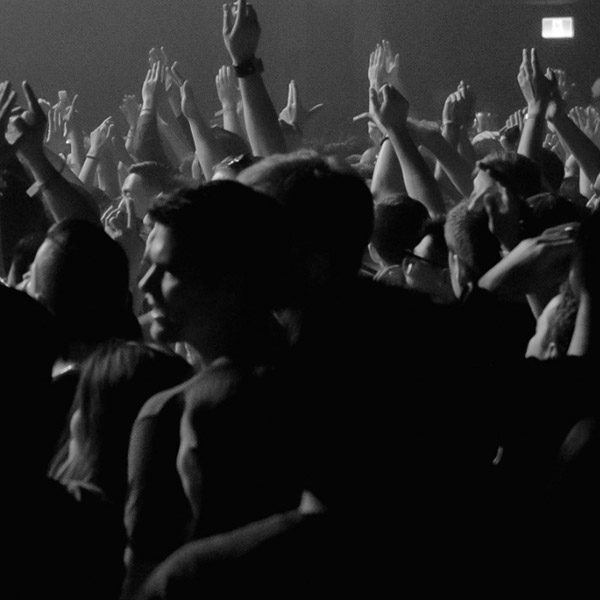Meet the Editors Crafting Some of Spotify’s Top Playlists: ‘I Can Assure You We’re Not AI’
When Spotify’s social media accounts started posting about the editorial team’s song of the summer predictions in 2024, global head of editorial Sulinna Ong noticed a lot of commenters asking the same question: Is this artificial intelligence? “I actually went in and said, ‘I can assure you we’re not AI,’ ” she says, adding that she then found herself wondering, “Do people care whether it is [AI]?” The answer was a resounding yes. Ong recalls commenters were overjoyed to be able to identify her as a warm-blooded source of the faceless predictions. The reaction amounted to a collective “This is great. You’re human!”
Having focused on high-tech improvements to playlisting over the last few years, such as the AI DJ that subscribers can utilize and improved personalized Daily Mixes, Daylist and other features, Ong says she realized listeners value human input and connection more than ever and decided to recalibrate the “equilibrium” between AI and Spotify’s flesh-and-blood tastemakers.
“A big tenet of editorial is this idea of reflecting culture and also being able to propel culture forward,” says J.J. Italiano, head of global music curation and discovery.
As a result, Spotify’s editorial team is leaning further into its top playlists with new “Watchfeeds” — written and video content that contextualizes its choices. There’s also more freestyling involved, such as the throwback songs that Spotify head of urban music, editorial Carl Chery slips into RapCaviar on Thursdays, or the newsletter that head of indie/alternative Lizzy Szabo writes for Lorem. Ong says interactive elements such as likes and comments may be added in the future.
To further individualize their work, Spotify’s editorial team came together for a photo and spoke to Billboard about their backgrounds, their work and their favorite music. “We know that cultural knowledge is really important. AI and machine learning excel in passing large data sets and scaling, but when it comes to cultural understanding, that’s where human editors really excel,” Ong says. “But we are still focused on the strengths of both [tech and human features] and combining the two.”
Sulinna Ong
Global head of editorial

Raised in the United Kingdom, Iran and Australia, Ong caught the music bug when she heard Kim Gordon singing Sonic Youth’s “Kool Thing” as a 13-year-old. She worked in a wide array of roles for Live Nation, Sony BMG Music and French streaming service Deezer before joining Spotify in 2019. Prior to assuming her current position in 2021, Ong served as the streaming platform’s U.K. head of music and U.K. head of artist and label services.
Favorite Spotify playlists?
Misfits 2.0, Liminal.
What are your 2025 goals for the editorial team?
We’re thinking about how to make the playlists more engaging, and we think it’s a combination of short-form video and editorial. We refer to our roles as editorial, but they also involve curation. Editorial is the storytelling, the context: “Why is this important? Why is it culturally relevant?” The curation is, “What song? What artist?” There’s an art to combining both. As we look to the future, the editorial side is becoming even more critical. We are doubling down as human music editors in music discovery and trend forecasting in 2025.
Until now, Spotify’s curators have largely worked anonymously. Why change that?
AI doesn’t have a point of view. We found that people actually are interested about the people behind the playlists.
Read Ong’s full interview here.
Carl Chery
Head of urban music, editorial

After working at hip-hop magazine XXL, Chery joined Beats Music in 2012, which was folded into Apple Music in 2014. He oversaw hip-hop and R&B at both streaming services before moving to Spotify in 2018, where he leads curation for its urban music playlists, including RapCaviar.
Favorite Spotify playlists?
Locked In, Gold School.
What trends are you spotting?
I’m interested in seeing what happens with sexy drill. Drill’s been around for a long time, and it keeps morphing. If you go back five years, that’s when it really broke through with Pop Smoke and Fivio [Foreign] and the Brooklyn drill scene. Part of the conversation around drill is that its subject matter is so hardcore it’s potentially [limiting the style]. But sexy drill has a lot of appeal. I’m keeping an eye on whether this is going to finally break through as the sound du jour in hip-hop.
What are some common misconceptions about Spotify editors?
Some people think playlisting is based on favors. They don’t pitch songs based on their merits or performance. They think building a relationship with editors enhances their chance of getting playlisted. That’s never been the case. [Others] think that playlisting is based on personal taste. Technically, it doesn’t matter if we like it. One of the most important qualities for editors is to be objective, [though] this doesn’t mean that personal taste doesn’t come into play. The sweet spot is when you get to support something that is at the intersection of your taste and what the audience likes.
Ronny Ho
Head of dance & electronic, editorial

Though Ho booked concerts and hosted radio shows in college, she first worked in investment banking, and her initial job at Spotify was in business development. During her first years at the company, she got to know the members of the editorial team because she sat next to them. After moving to Spotify’s music team as a business manager, a role opened up in editorial, and she was given a tryout despite her unorthodox résumé.
Favorite Spotify playlists?
Tech House Operator, Marrow.
Given the global popularity of dance, how do you coordinate with curators around the world to make the best playlists?
We have global curation groups. Dance was one of the first ones that started. It happened naturally with us just reaching out to curators in other markets to see what they’re seeing. We talk now on a weekly basis about new music coming out, trends that are popping off, local subgenres or communities we find interesting.
How are you discovering music for your playlists?
It’s a mix. We get inbound pitches from the Spotify for Artists pitch tool, but I am also going to shows all the time. A lot of DJs are rinsing tracks that aren’t released yet live. I’ll watch and see what the reaction is. If there’s something that really hits with a fan base, I’ll make note of it. Also, I look on the internet.
J.J. Italiano
Head of global music curation and discovery

Italiano entered the music industry as an artist manager, then shifted his focus when he took a job as head of streaming at talent agency YMU in 2016. He joined Spotify’s editorial team the following year.
Favorite Spotify playlist?
Lorem.
How do you curate New Music Friday?
New Music Friday is a bit like the newspaper. We’re trying to create opportunities for people to discover new stuff that we think they will like so, yes, there’s going to be a handful of high-profile releases that you would expect. Then everyone from their respective genres comes together and brings the tracks they think are most relevant, as well as their favorite songs. Through a process of democracy and a little bit of chaos, we get it out the door.
How do you compile Spotify’s biggest playlist, Today’s Top Hits?
One of the core tenets is that it is not a chart. Yes, we want them to be 50 of the biggest songs that week, but we’re also looking at user behavior. We look at all other playlists — how songs perform with different audiences. It’s more of a science than an art, but it is still both.
Does anyone listen to songs submitted through the pitch tool?
We get pretty decent coverage by humans. There’s over 100 people at Spotify whose job it is to listen to music. We use a combination of the tools we’ve built to sort through it and hiring the right people. Also, we pay attention to songs over time and can identify things that are trending upward or being saved a lot post-release.
Alaysia Sierra
Head of R&B, editorial

After cutting their teeth as a playlist curator for Apple Music, Sierra was recruited by former Apple Music colleague Carl Chery to spearhead R&B curation.
Favorite Spotify playlist?
Riffs and Runs.
What’s the process of making a playlist?
A few years ago, I noticed there was a sound that emerged out of trap-soul, like Bryson Tiller, PartyNextDoor, Brent Faiyaz. Mostly, when people think of R&B they think of women, but this subgenre of R&B caters to men. I thought, “How do I create a space for them to lean into their R&B-loving?” So we created DND, or Do Not Disturb, to feature that laid-back, masculine feel. I wrote up my ideas, what artists would make sense in the space, what it would look like and presented it.
What changes have you brought to R&B playlists?
When I came in here, I felt like there could be a fresher perspective to R&B that can cater to the TikTok era. There’s a romanticization of ’90s and pre-’90s R&B, but there are all these kids coming up who love and are inspired by the genre. I wanted to evolve R&B at Spotify to showcase that the genre can be so many things today.
Any emerging trends you are particularly excited about?
I’m really excited about U.K. R&B right now. Streaming has globalized music, and I think it’s given a lot of opportunity to that scene. We show that scene on Riffs and Runs.
John Stein
Head of North America, editorial

With almost 12 years at Spotify under his belt, Stein has been involved with playlisting from the beginning. He joined Spotify when the streaming platform acquired his previous employer, the now-defunct curation app Tunigo. Stein and his team became the curators of Spotify’s Browse page, and he worked his way up to his current position.
Favorite Spotify playlist?
Fresh Finds.
How has Spotify’s editorial playlisting evolved?
Back in those early days, we were very broad — much more moods- and moments-focused. There was a real emphasis on being an alternative to terrestrial radio. We wanted to introduce some new options: “Let’s think about activities and curate for those in addition to genres.” Over time, we created strong flagship genre playlists to be anchors, but we’ve also wanted to build out spaces that hit other moments in people’s lives — hopefully pushing forward the idea of blending genres.
What’s the balance of data and human curation in playlists today?
We’re coming to a point where the algorithmic side and the human side are coming together in a really balanced, beautiful way. As a company, we’re trying to embrace the fact that AI is really good at scale and serving you what we know you already like. But [identifying] moments of surprise and serendipity and cultural awareness is really difficult for it. You need a human editor to contextualize it in a way that brings emotion to it.
Lizzy Szabo
Editorial lead, indie/alternative

Szabo got her start in music as an agent’s assistant before becoming the executive assistant for former Spotify global head of creator services Troy Carter. She wrote an essay asking to move to the editorial team and detailing what she could do to expand the company’s playlists. It worked: Szabo became an editorial coordinator and worked her way up to helm the service’s indie and alternative coverage.
Favorite Spotify playlists?
All New Indie, Wine Bar.
How do you define the term “indie”?
More and more the question is, “What even is genre?” So we try to think in terms of audiences. With All New Indie, Lorem and those playlists, we are really fluid. Some weeks we question, “Is Caroline Polachek pop or indie?” You can make the case for either, but [we conclude] she would likely work best in indie.
With smaller artists, how do you balance human curation and metrics?
It is a challenge because it feels like there’s a new breakthrough every week in indie. It’s hard to predict. When we’re looking at priority releases for the year, the truth is you might not know. Someone could come along in two months that’s going to change the game. What’s incredible about something like the Fresh Finds program is that it encourages us to go with our guts on the really tiny stuff and have somewhere to put it [for] an audience craving music discovery.
Antonio Vasquez
Head of U.S. Latin, editorial

A 15-year music business vet, Vasquez began his career doing digital marketing for legacy musicians in Mexico City as social media and Facebook advertisements began to take off. Spotify then hired him as its first editor on the Mexico team. After a year, he moved to New York to start a U.S. Latin team. He’s now based in Miami.
Favorite Spotify playlists?
Fuego, Hanging Out and Relaxing.
How does the Latin editorial team work?
On the U.S. Latin team, we have a small but mighty team of three people. We have balanced our skill sets and music expertise to make sure we are covering the most Latin genres as possible. Antonella [Bocaranda] handles pop and tropical music. DC [Daniel Calderon] has his ear to the ground in Los Angeles with all things música mexicana. We always make sure that everyone has a bit of say in editorial decisions so we don’t fall [victim to] bias. Almost all priority markets in [Latin America] have their own editors locally. We work closely with them almost every day to exchange music and create a strategy.
What’s a Latin trend you’re tracking?
We’re starting to see stronger local scenes. So we need to be communicating even more across countries to make sure we are aware of what’s happening.
What’s a common misconception about Spotify editors?
That everything is data-driven. That really takes away from the heart and soul we put into our playlists every day.
Cecelia Winter
Editorial lead, pop

Winter got her start in the music curation business with Spring, an app founded by elite runners that gave music fans song recommendations based on how fast they wanted to work out. After working as YouTube’s pop editor, she joined Spotify’s editorial team in 2023.
Favorite Spotify playlist?
Pop Sauce.
How do you define “pop” music?
Pop, by its traditional definition, wouldn’t allow space for smaller artists, so we are really working to create spaces where artists who are making music that sounds pop — hook-driven and following a certain structure — can grow and find their audience. It’s hard to define, but you know it when you hear it. Pop music is not as tied to commercial success as it once was either. There’s top 40, which skews pop, but those metrics of success are not accessible to the vast majority of pop musicians. [With playlists] there is now an emerging mid-tier.
What is a market that tends to lead to pop trends that later emerge in the United States?
There’s a lot of interesting music coming out of the Nordics, and there are a lot of interesting stories where American or British artists who have trouble [breaking through] in their home market really explode in the Nordics first. We saw that with Benson Boone. Our editor in the Nordics flagged him really early on.
This story appears in the April 19, 2025, issue of Billboard.
Josh Glicksman
Billboard








